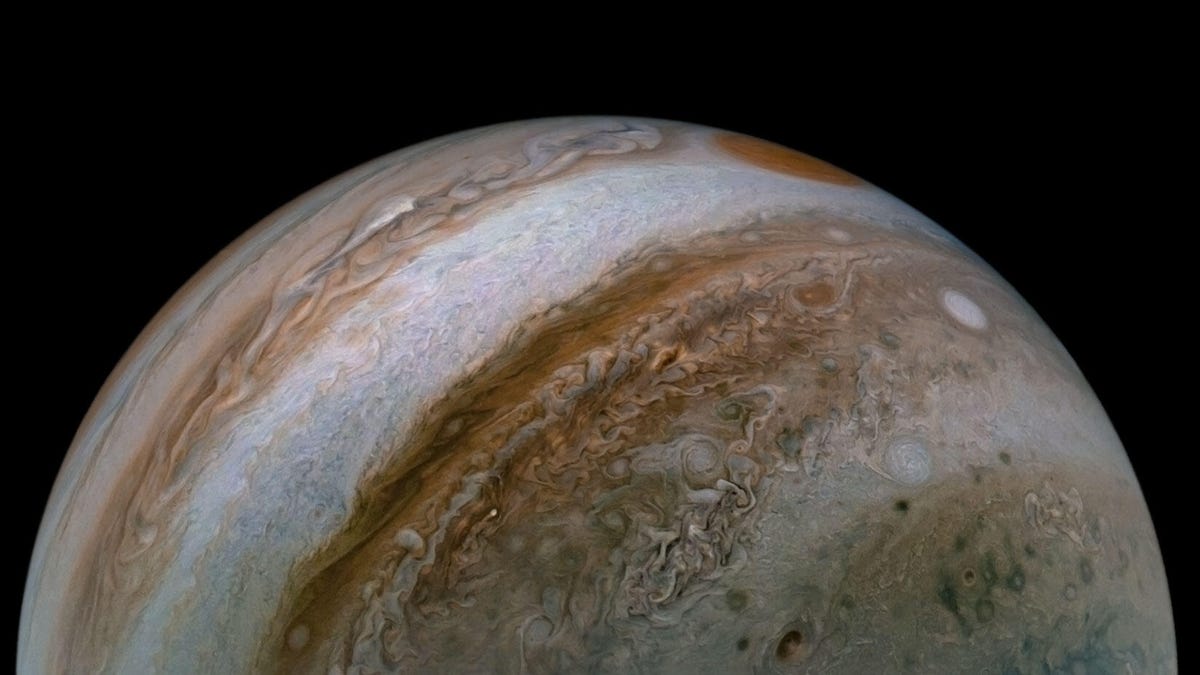Jupiter is known as the king of planets. The rotating gas giant can fit 1,000 Earths inside. This is an absolute unit, a beautiful chonk. This Saturday, December 7, offers the best Jupiter-viewing opportunity of the year.
Jupiter reaches opposition on December 7th. An opposition is when a planet is on the opposite side of Earth from the sun, so Earth is like the filling in a celestial Oreo cookie.
“Jupiter will shine brightest for the year, rising in the east-northeast among the stars of Taurus,” NASA said in a skywatching guide for December. The gas giant will be visible all night, so go anytime to check it out. A Jupiter opposition only occurs approximately every 13 months, so don’t miss it.
You can enjoy Jupiter with the naked eye, but it really stands out when you look at it through good binoculars or, even better, a telescope. If binoculars are all you have, then give it a try. Brace your elbows on a hard surface to stabilize the view. Look for tiny points of light nestled close around Jupiter. If you’re lucky, you’ll spot the four Galilean moons: Ganymede, Callisto, Io, and Europa. The Italian astronomer Galileo Galilei first noticed the moons of Jupiter in 1610. Jupiter now has 95 recognized moons, but only the largest can be seen with binoculars.
This processed color view of Europa comes from NASA’s Galileo spacecraft in the late 1990s.
The opposition isn’t the only cool moment for Jupiter this month. NASA is encouraging stargazers to head outside around Dec. 14 to see Jupiter, which hangs between the moon and Aldebaran, a bright orange star in the constellation Taurus. Aldebaran is one of the brightest stars in the sky, so it should be quite a sight. If you need a little help tracking the star’s location, use a stargazing app to guide you.
As you enjoy Jupiter shining in the night sky, give some thought to humanity’s recent missions to the fascinating gas giant. NASA’s Juno spacecraft is still there and heading back stunning views of Jupiter. The space agency launched its Europe Clipper mission earlier this year. Europa Clipper will get up close and personal with the icy Galilean moon Europa, which may be hiding an ocean beneath its crust.
Jupiter is named after the Roman king of the gods. It will be the crown jewel of your sky-watching adventures this month.
